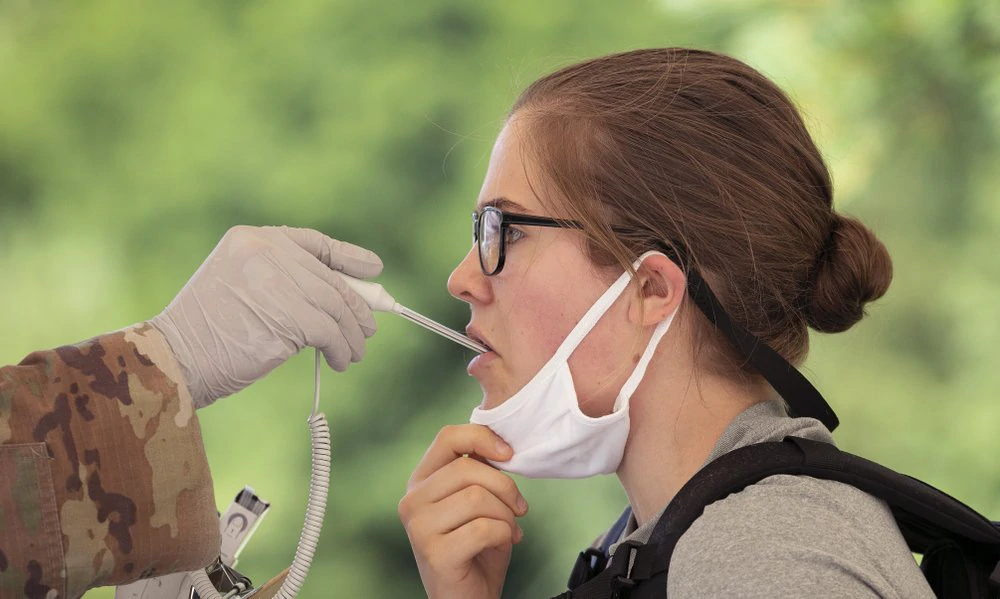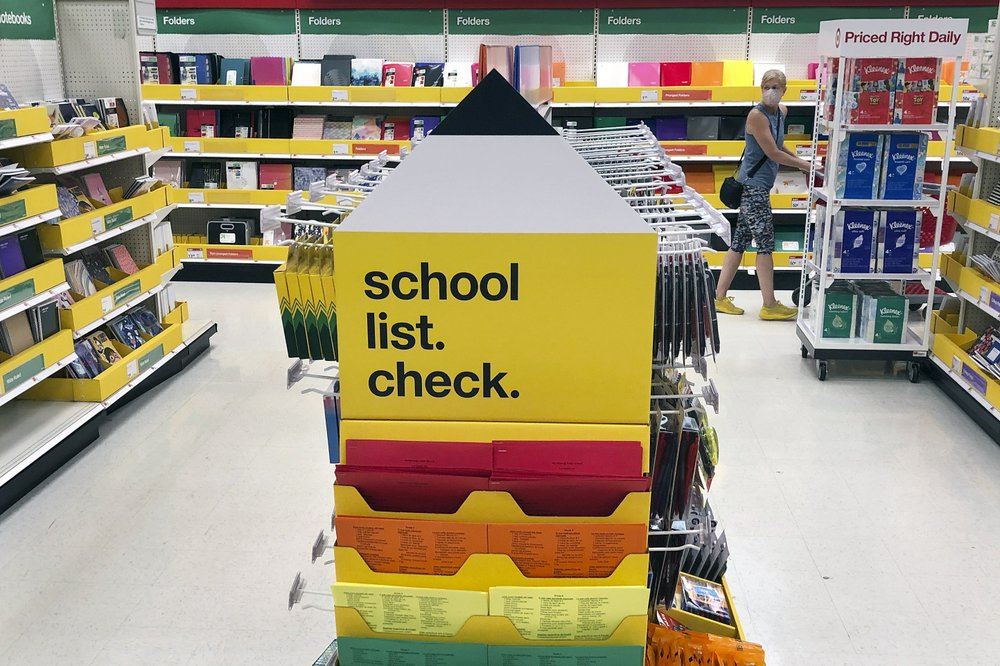[ad_1]
MIAMI (AP) — The resurgence of the coronavirus in the United States ignited fierce debate Monday about whether to reopen schools, as global health officials warned that the pandemic will intensify unless more countries adopt comprehensive plans to combat it.
“If the basics aren’t followed, there is only one way this pandemic is going to go,” said the director of the World Health Organization, Tedros Adhanom Ghebreyesus. “It’s going to get worse and worse and worse.”
Debate over the risks the virus poses, and how best to fight it, were spotlighted in Florida after it shattered the record among U.S. states for the largest single-day increase, with more than 15,000 newly confirmed cases.
Officials and health experts in hard-hit Miami pushed back against pressure, both from Gov. Ron DeSantis and President Donald Trump, to bring students back to classrooms next month.
Read More: Trump threatens to cut federal aid if schools don’t reopen
“We just absolutely cannot risk the health of children, their well-being and safety, or any of our colleagues,” said Karla Hernandez-Mats, president of the United Teachers of Dade union and a middle school teacher herself. “We’re probably going to have to go to a full shutdown mode. I can’t see the schools reopening except with the 100% virtual model.”
Parents have until Wednesday to notify the Miami-Dade school district of their decision whether they will send their kids to school this fall or have them study online from home.
“Children can get get the virus in their bodies and get contaminated just like anybody else,” said Florida International University epidemiologist Dr. Aileen Marty, who has been advising the Miami school district on its reopening plans.
DeSantis has argued that children have not proven to be vectors for the disease and that if retailers like Walmart can be reopened safely, then schools should be able to as well. But he made those arguments with a notable caveat, saying that each county should make it own decision on reopening in consultation with local health officials.
The debate is hardly limited to Florida.
In Detroit, where summer school classes for hundreds of students opened Monday, protesters blocked a school bus yard with tree branches.

“When I visited schools this morning I knew we were doing the right thing for children,” schools Superintendent Nikolai Vitti said, in a post on Twitter.
“COVID is not going away. Many of our children need face-to-face, direct engagement,” he said.
But lawyer Shanta Driver said she planned to file a lawsuit to stop the in-person instruction.
“I’m not going back until this pandemic is defeated. There is not a safe way to return to school while this virus is spreading uncontained,” said teacher Benjamin Royal.
Officials in California’s two largest school districts, Los Angeles and San Diego, announced Monday that students will stick to online learning from home when school resumes next month, rather than return to classrooms.
The districts cited research about school safety experiences from around the world, along with state and local health guidance.
“One fact is clear: Those countries that have managed to safely reopen schools have done so with declining infection rates and on-demand testing available. California has neither,” the districts said in a joint statement. Los Angeles, the second largest school district in the U.S., has about 730,000 students and San Diego serves about 135,000 students.
In North Carolina, which reported its highest one-day number of cases and hospitalizations, Gov. Roy Cooper has asked school districts to prepare three re-opening plans that include options for in-person and fully remote learning. His decision is expected later this week.
But teacher Becky Maxam, whose husband is considered high-risk for the virus because of a genetic heart condition, said she doesn’t plan to return if her Charlotte middle school reopens.
“I’m not going back if we’re opening up. I can’t risk my family,” Maxam said. “I think we should be virtual until we find a vaccine or cases go down much more than what they are.”
The debate over what to do about schools came as a pair of WHO experts were in China for a mission to trace the origin of the pandemic. The virus was first detected in central China’s city of Wuhan late last year. Beijing had been reluctant to allow a probe but relented after scores of countries called on the WHO to conduct a thorough investigation.
China has argued that the virus might have originated outside of China and has angrily denied allegations that it covered up the scale of the outbreak as infections first began to spread.
Also Monday, the United Nations warned that the pandemic could cause 130 million more people worldwide to go hungry this year.

U.N. officials estimate there were about 690 million people in 2019 who went hungry worldwide, with the majority in Asia and Africa.
“While it is too soon to assess the full impact of the lockdowns and other containment measures,” the agency said that, at a minimum, another 83 million would go hungry as a result of the pandemic.
The WHO’s Tedros said the consequences would be worst for the world’s most vulnerable populations. But he noted Monday that the most recent surge in cases had come in the Americas. The United States and Brazil alone account for more than a third of all global deaths from the disease.
“I really do think we could control this, and it’s the human element that is so critical. It should be an effort of our country. We should be pulling together when we’re in a crisis, and we’re definitely not doing it,” said University of Florida epidemiologist Cindy Prins.
But with Trump pressuring school districts to reopen this fall, and with the academic year in some southern states just weeks away, the debate over how to respond to the resurgence is growing more heated.
Trump has harshly criticized the WHO over its response to the coronavirus pandemic and accused it of bowing to Chinese influence. The Trump administration formally notified the U.N. last week of its withdrawal from WHO, although the pullout won’t take effect until July 6, 2021.
In Japan, more than 30 Marines tested positive at the Futenma U.S. air station on Okinawa, where infections among American service members have rapidly risen to more than 90 since last week. Okinawa is home to more than half of about 50,000 American troops based in Japan.
In other parts of the world, the number of infections has been rising dramatically in India, South Africa and Brazil, whose virus-denying president has tested positive.
Read More: White House slams Fauci over coronavirus disagreement with Trump
India, which has the most confirmed virus cases after the United States and Brazil, on Monday reported a record daily surge of 28,701 new cases reported in the past 24 hours. Authorities in several cities are reinstating strict lockdowns after attempting to loosen things up to revive an ailing economy.
In South Africa, which accounts for over 40% of all the reported coronavirus cases in Africa, President Cyril Ramaphosa reimposed a ban on alcohol sales and a nighttime curfew to reduce the number of people needing emergency treatment so hospitals have more beds to treat COVID-19 patients.
“We are taking these measures fully aware that they impose unwelcome restrictions on people’s lives. They are, however, necessary to see us through the peak of the disease,” Ramaphosa said in a letter to the nation Monday. “There is no way that we can avoid the coronavirus storm. But we can limit the damage that it can cause to our lives.”
___
Geller reported from New York. Associated Press writers around the world contributed to this report.
Have you subscribed to theGrio’s new podcast “Dear Culture”? Download our newest episodes now!
[ad_2]
Source link


